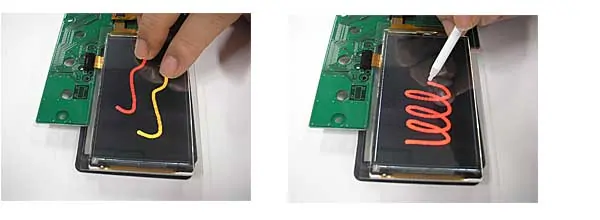Hitachi Displays Ltd has developed a new kind of touchscreen, a capacitive model that can handle input from non-conductive sources.
Most of the Android smartphones being sold now use capacitive touchscreens. They have a conducting panel coated with an insulator. Touch input from a finger gives a measurable capacitance change, as the human body is also conductive. There are a number of ways to implement capacitive touchscreens, but the typical smartphone uses projected capacitance.
Projected capacitance uses an XY (two-dimensional) grid (caused by etching the conductor in a grid pattern) for more accurate input and touch detection. But any insulating materials, such as gloves, prevent input, and stylus input cannot be processed either. No conductive input, no capacitance to measure.
Resistive touchscreens work differently, measuring pressure rather than capacitance. They have two metallic layers with a small gap, and when pressed together the change in electrical current is recorded as a touch event. Resistive touchscreens can be used with a stylus for smaller and more detailed input, but aren’t as responsive to light pressure from a fingertip.
Hitachi’s new projected capacitive touchscreen can be used with one finger, multiple fingers (multi-touch input), a stylus, or with insulating materials. Outdoor operations, especially in cold weather, would benefit from a more precise touchscreen that can be operated wearing gloves. The screen can detect natural leather, artificial leather, wool and artificial fiber. The stylus is a synthetic resin pen, and the margin of error for coordinate detection is one percent. Hitachi also states that multi-touch input could be performed with both fingers and the stylus simultaneously.
How does it work? The non-conductive input is converted to electrostatic capacitance, so one controller chip can process inputs of both types. Look for this new innovation at the Createc Japan 2010 trade show, October 5-9 in Chiba Prefecture. Maybe it will be coming to a smartphone near you someday!
